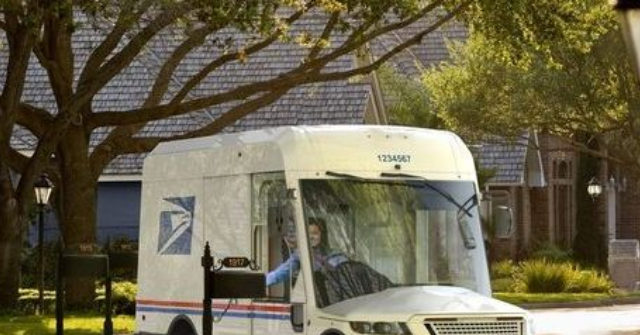The U.S. Postal Service (USPS) is facing significant delays in its multibillion-dollar initiative to acquire electric mail delivery trucks, a program critical to President Joe Biden’s climate change efforts. Initially touted as a central part of Biden’s agenda, the plan to replace aging postal vehicles with electric models is now mired in setbacks that could undermine its objectives. The initiative, funded in part by $3 billion from the Inflation Reduction Act of 2022, aimed to modernize the USPS fleet while aligning with the broader goal of sustainable transportation. However, as reports indicate, the USPS has received only a fraction of the expected delivery vehicles, which raises concerns about both its ambitious climate goals and the operational efficiency of the Postal Service.
Internal records and interviews reveal that the USPS had only received 93 of the so-called Next Generation Delivery Vehicles (NGDVs) from contractor Oshkosh as of November, a stark contrast to the anticipated 3,000 vehicles that were expected to be delivered by that time. The root cause of these delays can be traced to manufacturing issues that Oshkosh allegedly failed to communicate for over a year, including complications with airbag calibration and water leaks. Production capacity is severely limited, with the South Carolina factory currently able to produce just one truck per day, whereas the original plan foresaw a rate exceeding 80 trucks a day by now. This significant shortfall raises serious questions about the feasibility of meeting future production timelines.
The ramifications of this delay extend beyond the immediate logistical challenges facing the USPS. As the timeline for the program stretches out, it is becoming increasingly clear that these setbacks could delay the integration of electric vehicles into the postal fleet until after Biden’s presidency ends in January 2025. With a potential shift in power dynamics in Congress and the upcoming presidential elections, the future of electric vehicle funding appears uncertain. House Oversight and Reform Committee Chairman James Comer (R-KY) has already indicated concerns about the possibility of reallocating or “clawing back” electric vehicle funds amidst upcoming reforms, further complicating the situation.
Original estimates set by the USPS indicated a need for 60,000 new delivery vehicles, largely composed of electric models sourced from Oshkosh. However, persistent delays not only hinder the project but have also led Oshkosh to announce increased costs for the vehicles. In March 2023, the contract price for 35,000 vehicles surged to $2.6 billion, with the costs per electric truck at $77,692 and gas models at $54,584. These financial challenges reflect broader issues with the production capabilities of Oshkosh and may place additional strain on the Postal Service’s financial resources as it seeks to balance its budget amidst rising operational costs.
Further compounding the pressure, Oshkosh has cautioned investors that performance under the USPS contract may not meet expectations due to variables such as extended engineering timelines and delays in production setup. The possibility that the USPS may not achieve its electrification goals raises critical questions regarding its ability to modernize effectively in a competitive logistics landscape. Such challenges risk diminishing the perceived efficacy of Biden’s climate agenda if they remain unresolved, potentially leading to scrutiny from both political opponents and the public.
In response to ongoing setbacks, some postal leaders have begun to explore alternatives to Oshkosh, contemplating partnerships with other manufacturers, including General Motors and start-up Canoo, to fulfill the Postal Service’s delivery vehicle needs. Additionally, the agency has proactively begun purchasing and deploying over 1,000 Ford eTransit electric vans to support its delivery services. This shift illustrates a growing recognition within the Postal Service of the necessity to adapt its strategy in light of Oshkosh’s inability to deliver on its promises. As the agency navigates these turbulent waters, the overall success of the electrification initiative will depend on decisive actions and a clear plan moving forward.

